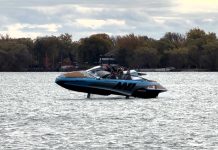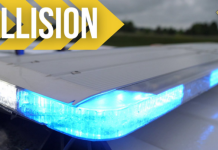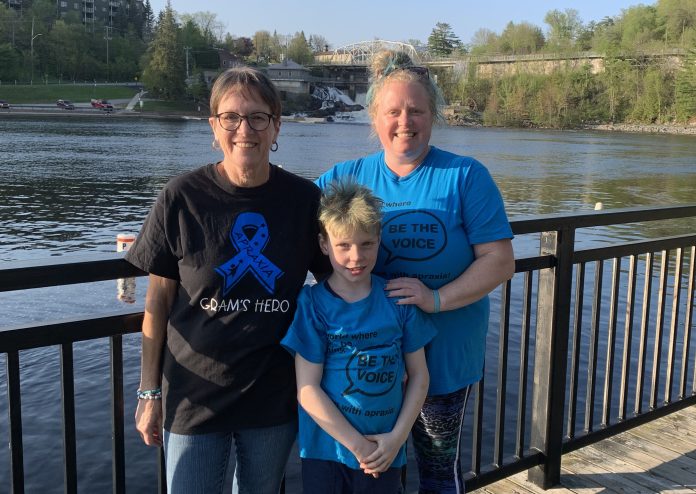
As Apraxia Awareness Day approaches on May 14, families and professionals alike are calling for better access to resources.
Childhood apraxia of speech (CAS) is a motor speech disorder with neurological roots. People with CAS know what they want to say but struggle to perform the complex movements required to form speech. Though it starts in childhood, it’s a condition that persists into adulthood. Brooke Rea is a speech-language pathologist (SLP) with a concentration in CAS. She works on the professional advisory committee for Apraxia Kids, an international organization dedicated to apraxia awareness and education. She plays a key role in the Canadian chapter of the nonprofit while also running a speech centre in Guelph.
“Access to appropriate treatment, whether that’s intensity, whether that’s a speech pathologist with the appropriate training, whether it’s the frequency, all of that remains to be very elusive for families,” Rea said. “Many families have access to some kind of employee health benefits, but our insurance companies have not grown or changed those rates reflective of what the industry charges, and so even families who have some funds to access private therapy are not able to access near what is needed.”
The frequency and timing of treatment
As is the case with many childhood disorders, early intervention is essential. The effects of CAS compound with age, and it’s a disorder that requires intensive ongoing therapy to address. Many children with CAS are directed to attend sessions two to three times a week, but some studies suggest that three to five times a week is more in line with client needs.
Accessing appropriate treatment is the number one concern for families across Canada, Rea said. She doesn’t know any children with CAS who get more than three sessions per week. Most families can’t afford more than two sessions a week if they elect to go with private therapy, which is often necessary to get the specialized care they need.
“Most of the students in the Ontario School Board System are getting maybe 12 sessions a year. Some are fewer than that,” she said. “The system is not designed for these kids in any capacity.”

Another systemic flaw affecting people with CAS is the inability of SLPs to make formal diagnoses of speech disorders. In the rest of the country, SLPs can communicate diagnoses directly to their clients. But in Ontario, the Regulated Health Professions Act requires a medical doctor to step in, which can complicate families’ ability to access resources.
Rea would also love to see an increase in awareness. Some municipalities, like Bracebridge, light up the falls or other local landmarks on the 14th, but she hopes to see more recognition in schools, medical systems and provincial governments. Many people who come into her office have never heard of CAS, but still, great things are happening within the organization.
“We’ve increased the number of speech pathologists with advanced training with Apraxia Kids, which has been pretty phenomenal,” Rea said. “We have a very large Ontario contingent now of speech pathologists with advanced training.”
More and more local practitioners are seeking training beyond the basics of apraxia treatment and assessment. In addition, Rea said public health institutions, as well as pre-school and school-based speech and language systems, continue to recognize that they don’t meet the needs of kids with CAS. Though the changes have been incremental, things are improving.
Meanwhile, Apraxia Kids Canada has struggled to refine their role in Canada. If they take on charitable status, they won’t be able to provide funding grants for private therapy. Rea and others are working behind the scenes to establish a foundation that will allow them to give direct support to Canadian families who need it.
Reaching a point of resolution
Regardless, the organization continues to provide resources and support to people across Canada. Their website is a robust source of accessible and digestible information for families, professionals and educators. They have a Facebook support group for families, and this year’s conference is fully virtual, offering recordings and live presentations on a wide range of topics.
The prevalence of the disorder remains about one to two people per 1,000. Similarly, the number of people accessing services through Apraxia Kids Canada has held steady. As new families join the community, others reach a point where their children no longer need as much support.
“Our goal is always to get them to a point where, in a day-to-day situation, speaking verbally, you would not notice,” Rea said. “I would say that we’re successful in that goal frequently, often when those kids have been identified early, they’ve received regular, intensive and appropriate therapy, and other factors with respect to prognosis have been well aligned.”
Other factors include things like cognitive impairments or other medical issues. For children who are generally healthy and able to attend therapy, they’ll likely be able to get to a point of resolved CAS where their condition isn’t noticeable.
When children are diagnosed, their parents often wonder if they’ll ever be able to speak. Rea has been in a position to see many families move on to questions about whether their children will ever stop talking. She said they often joke within the community that apraxia parents are the only ones to be thrilled when their children get in trouble for talking in school.
Many families put other aspects of life on hold to pursue the rigorous therapy schedule required. It’s costly, both in time and money, so seeing progress serves as proof that they did it all for a reason.
“It’s that reassurance that they did the right thing, and the exhaustion and the advocating and the arguing and the fighting that they’ve had to do for their child’s voice was worth it,” Rea said. “Progress is everything.”
Bracebridge resident Jody Hamilton knows how gratifying it is to see that growth. Her son Nash, now nine years old, was diagnosed with CAS at age two. He started with communicating one or two words at a time, but now, he can speak in full sentences of 20 words or more.
“Anybody who hasn’t seen him in a year or two has said, ‘Oh my gosh, his speech has improved so much,’” Jody said. “He’s doing well. Speech can be challenging for him because he has to work at it, but he continues to improve.”
Navigating treatment and childhood
Nash is still working on the clarity of his speech, but he’s taken leaps and bounds in communicating. He used to rely on an iPad, which acts as an augmentative and alternative communication (AAC) device, to speak.
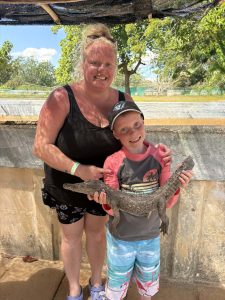
These days, he talks on his own, and his iPad serves as a way to refine his reading and writing skills. He uses it while taking spelling tests or reading paragraphs for class.
“As his needs grow, the AAC device grows,” she said.
In many ways, Nash is an average third grader. He loves fishing, going to the trailer and cottage with family, and spending time with his mom. He plays rep basketball, and his team recently took home bronze in their final competition weekend.
In school, he loves learning about language despite his own communication challenges. He also enjoys math and, like many others his age, recess. He doesn’t always want to go to speech sessions, especially because he has so much fun in regular school, but he often enjoys it once he’s there.
He’s looking forward to Apraxia Awareness Day and has advice for people interacting with those who have CAS.
“They should understand when they know that they have apraxia, you should give them time to think about things,” he said, “and you should give them time to say words and try to sound out the words.”
Thanks in part to his mom’s advocacy efforts, Nash and his family have a network of other apraxia families in the area. They regularly reach out to the other three families, who all have children near Nash’s age that have developed friendships.
“It feels good for me because they know what it feels like,” Nash said.
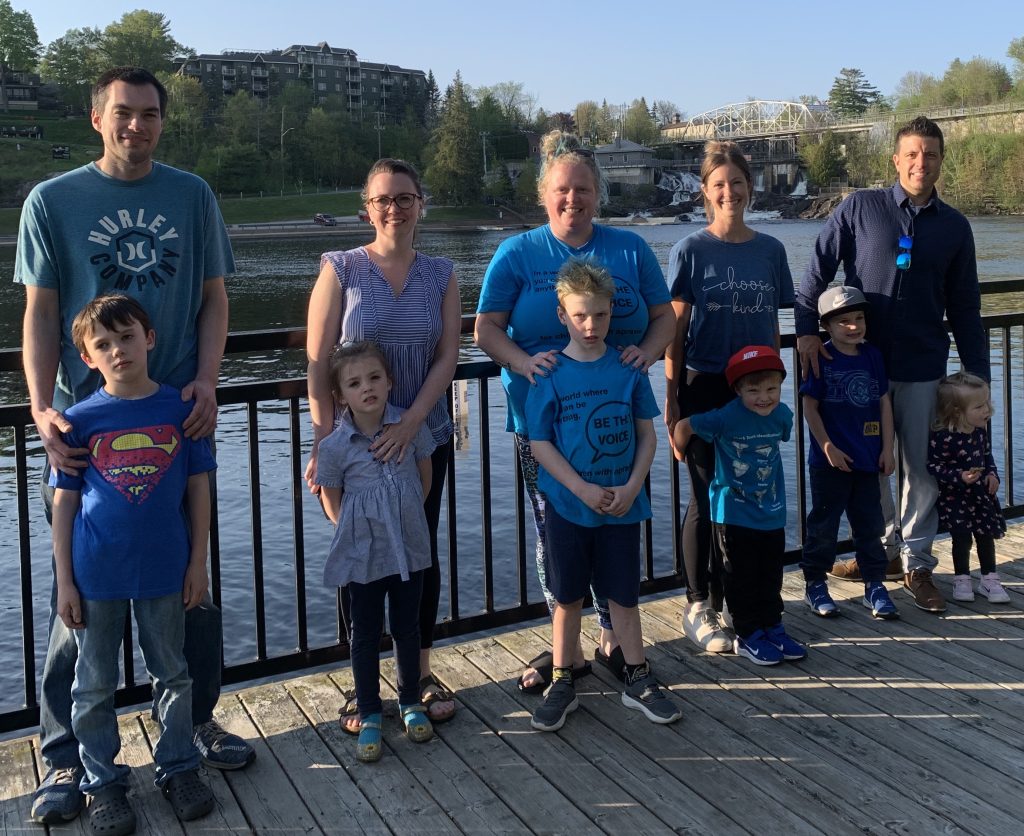
Jody said life is busy now that their children are in sports alongside their speech therapy and other commitments. Still, it’s nice to have people with a similar perspective and experience to rely on. They’re meeting at the falls on Wednesday to celebrate the awareness anniversary.
“We usually meet on Apraxia Day, which is awesome,” she said. “Whenever we need each other, we lean on each other.”
On top of the local connections they’ve built, Apraxia Kids has been a good support system that offers different resources and a sense of community. Jody works as a moderator for the Apraxia Kids Canada Facebook group in addition to her local awareness efforts.
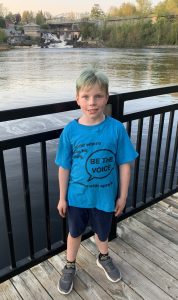
She also works hard to make sure Nash understands the reasons behind all of the work. As a nine-year-old, he has many other things he’d like to spend his time doing, so she helps show him parts of the journey he can’t necessarily remember.
“He’s put in lots of work. I mean, so have I,” Jody said. “Even though sometimes he doesn’t love going to speech, we have a conversation. I’ll show him videos of what he sounded like when he was two, and then I’ll say, ‘Look at how far you’ve come.’”
It’s been an emotional journey for the two of them. Speech is expensive, and the need for greater funding and resources remains. Nevertheless, apraxia families and practitioners make it work, even in small towns like Bracebridge.
Jody has spent years advocating for her son, speaking in schools and raising awareness in as many ways as possible. She aims to help families who are new to the diagnosis and be there for others who are in the thick of the process. She welcomes apraxia families to join the community both online and in person.
“If families are out there and need some guidance, reach out to the apraxia world and reach out to me.”
To learn more about CAS, visit the Apraxia Kids website.


